


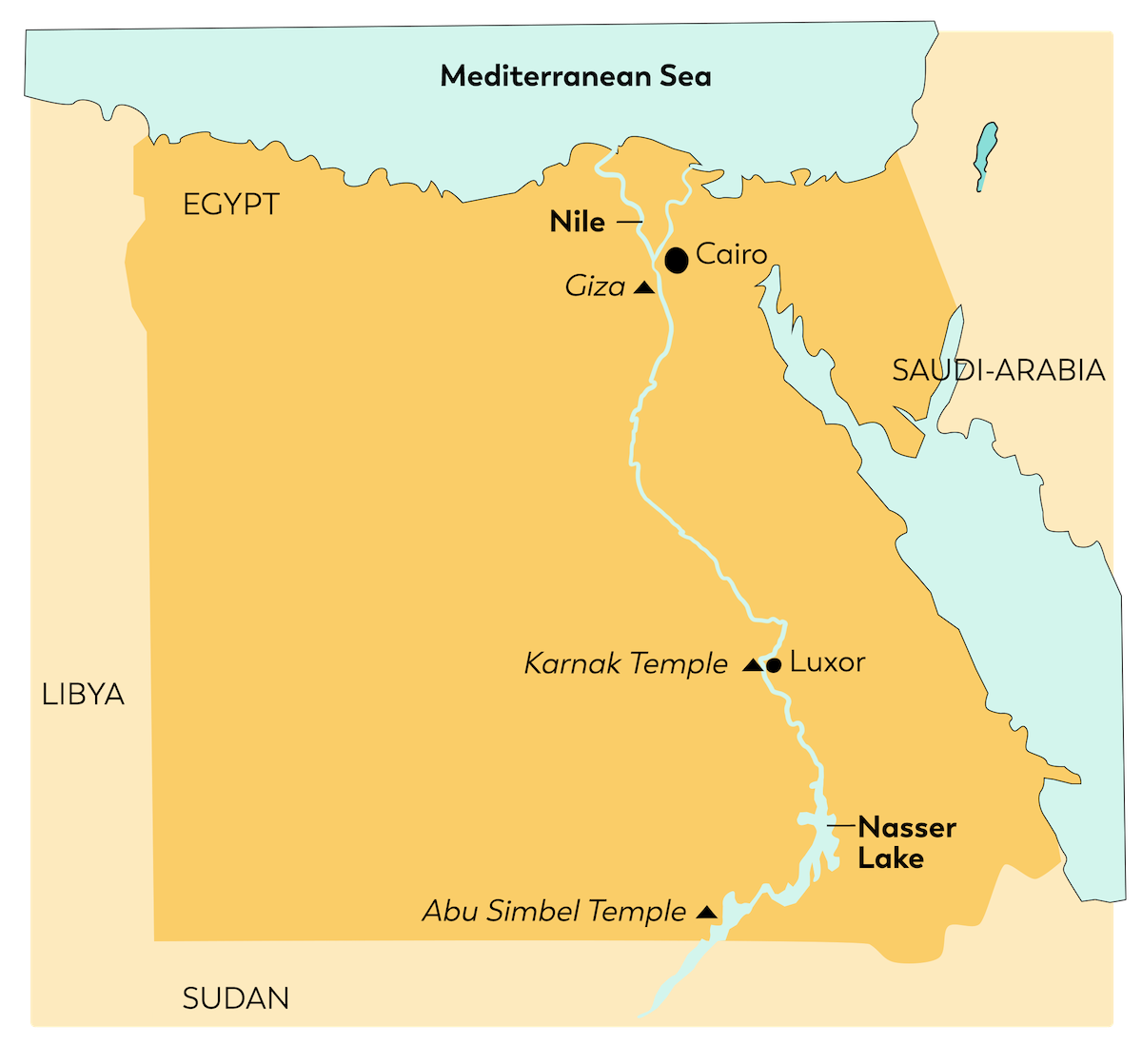
Let’s head to Egypt! A very important river crosses this big, desert-filled country: the Nile. It’s the Egyptians’ best ally: without it, it would be impossible to eat!
The ancient Egyptian period covered several centuries, interspersed with different political periods. Under the different “Empires” the power was in the hands of a powerful king named “Pharaoh”. Let’s go!


Several empires in succession followed each other throughout the centuries in Egypt, ruled over by the Pharaohs.
The only one of the seven wonders of the ancient world still standing is in Egypt. It’s the Pyramid of Pharaoh Kheops, almost 150 metres high (about half the height of the Eiffel Tower)!
The pyramids were the last resting place of the Pharaoh, who was regarded as a god. Why the triangular shape? Because it symbolised the elevation of the spirit of the Pharaoh towards the sun.
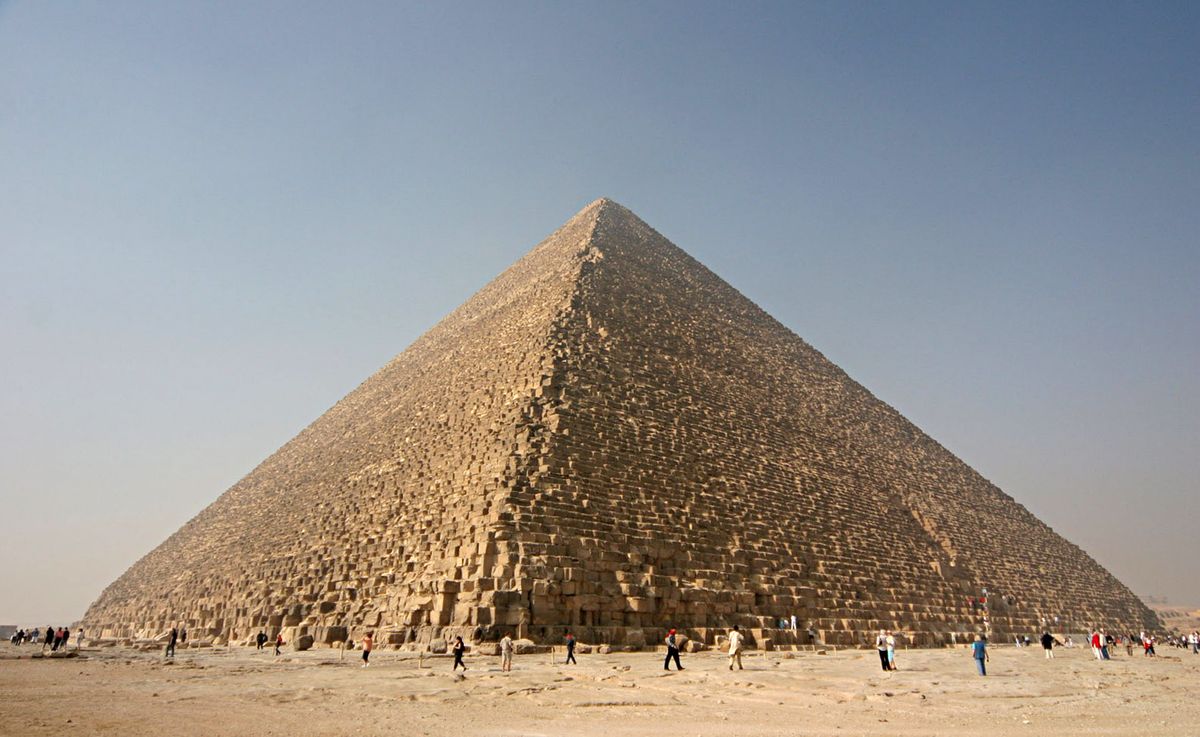
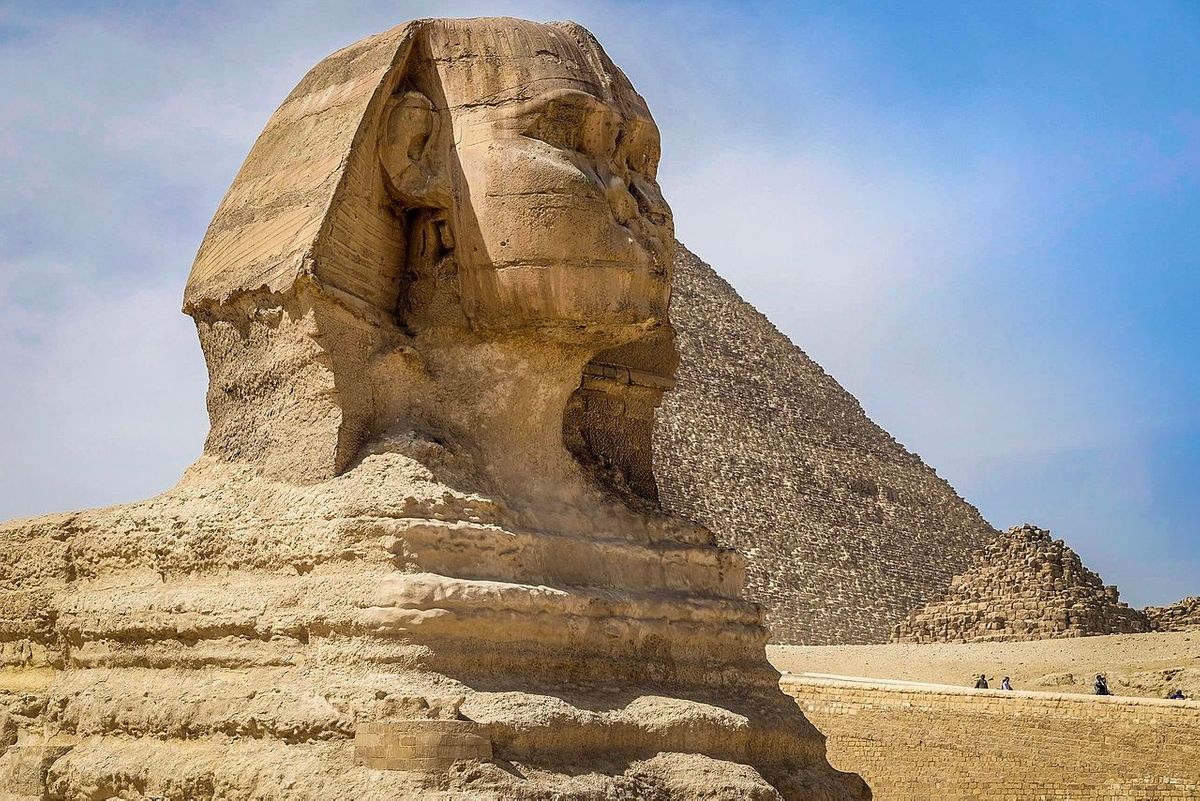
And who stands guard at the foot of the Pyramids? The Sphinx. It has a lion’s body and its face may be a portrait of Pharaoh Kephren.

The Pyramid of Kheops (used as his tomb), the only ancient wonder of the world that still exists, is guarded by the Sphinx.
Contrary to one urban legend, the Pyramids were not built by Martians or slaves. Skilled paid workers built them. How were they able to build these enormous pyramids at a time when the wheel did not yet exist?
We present the theory of the architect Jean Paul Houdin (but be warned, more recent discoveries may challenge it).

The pyramids were built by paid workers, possibly using an internal ramp.
What happens when we die? Ancient Egyptians believed that they went to the afterlife. To get there, there were all sorts of guidebooks containing magical formulas.
They were written on the walls of the tombs, because people believed that everything represented there would be recreated in the next life. Art was magical in Egypt! Sometimes they included drawings of food in case the dead person felt peckish on the way.


In the tombs of Ancient Egypt, people drew pictures of what they wanted the deceased to take with them after death, such as food.

The Egyptians used aspective to show several viewing points of an object drawn on a two-dimensional surface.
Like the Mesopotamians, the Egyptians believed in several gods.

Amon, Osiris, Isis and Anubis were the main gods revered by ancient Egyptians.
Why do we know so much about Egyptian civilisation? It’s all thanks to Jean-François Champollion (1790-1832).
Hieroglyphics is the name given to an extremely famous system of writing invented in Egypt during the fourth century BC.
The scribes, who could read and write; used simplified versions of the hieroglyphics, such as hieratics or demotics, for everyday administrative paperwork.
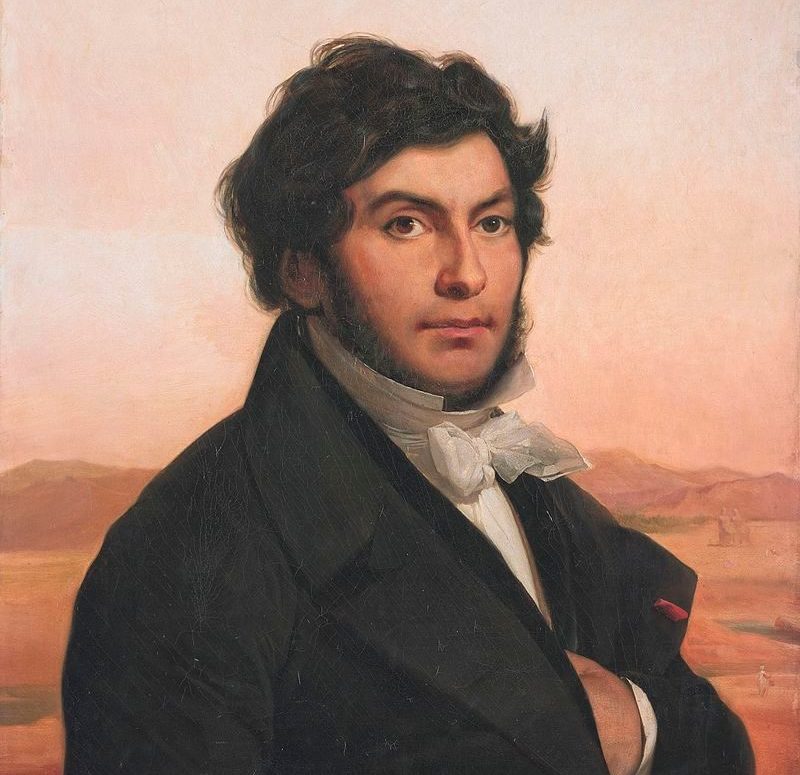
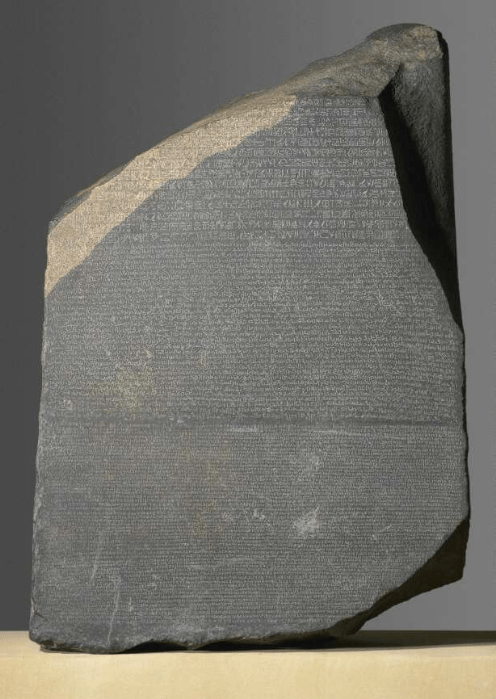
Champollion deciphered hieroglyphics using the Rosetta Stone.
There is writing on this stone in both hieroglyphics, demotics and ancient Greek, a language that he was totally fluent in!

Champollion managed to decipher hieroglyphics using the Rosetta Stone and the writing in three languages on it.

"*" indicates required fields